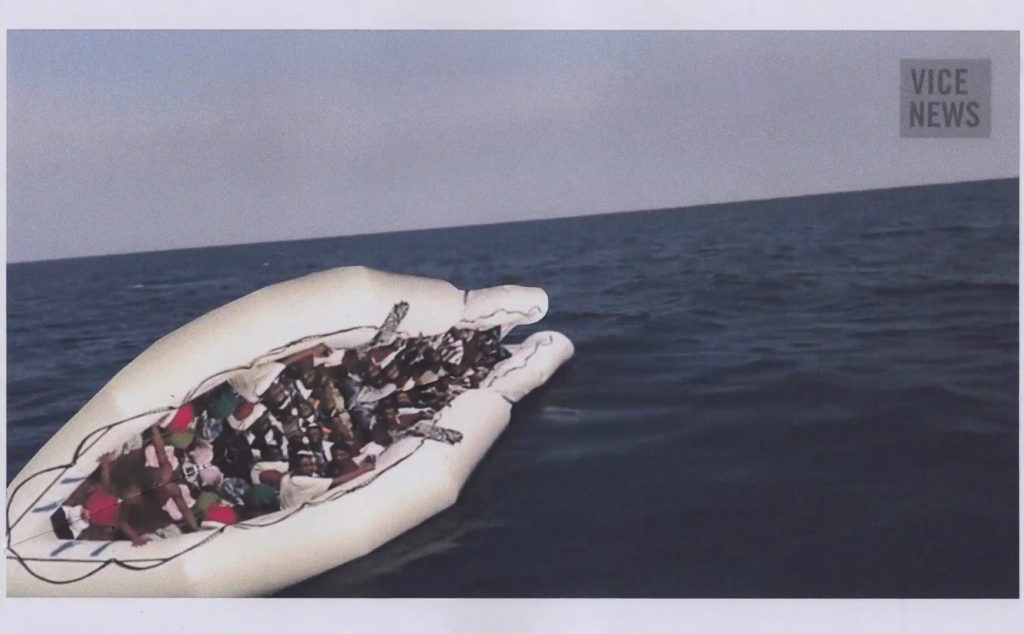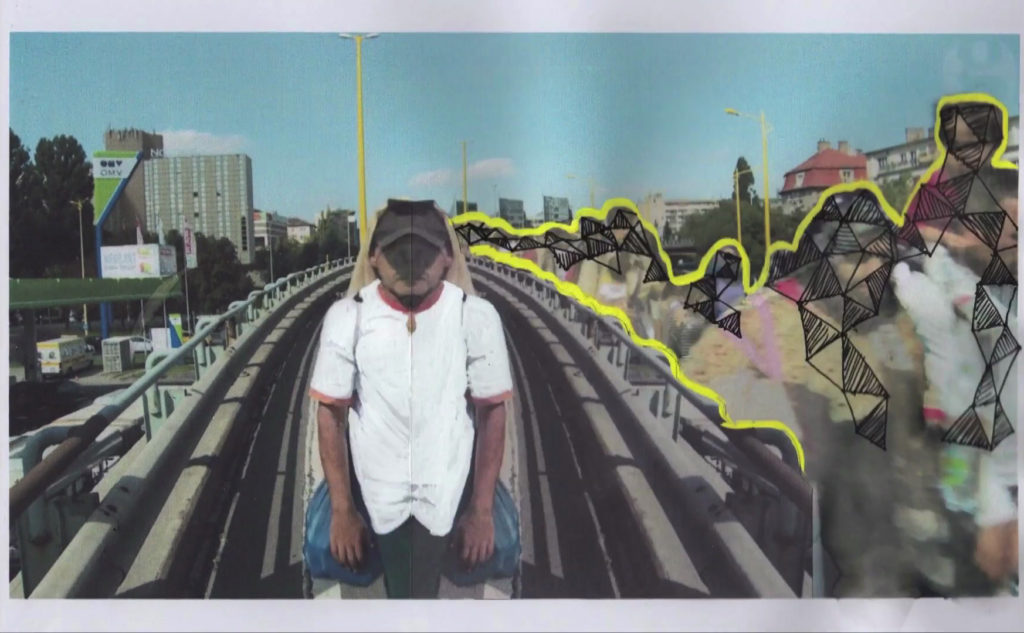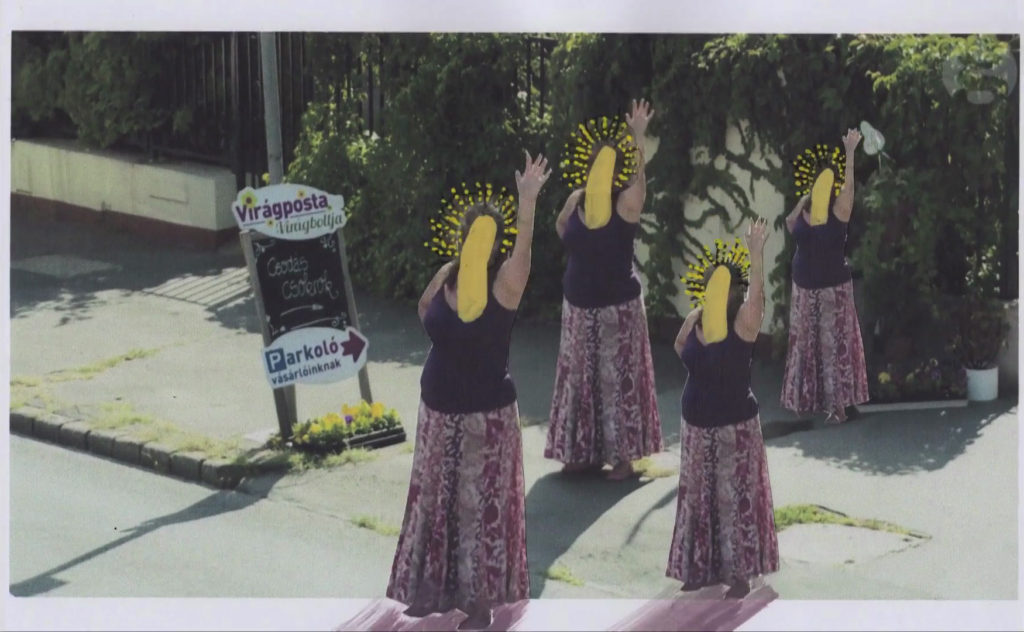Iconoclasm and Migration in “From Sea to Dawn” (2016)
In the ‘moving painting’ From Sea to Dawn (2016), which is currently featured in MCAD’s exhibition titled Constructions of Truths, the artists Ramin Haerizadeh, Rokni Haerizadeh, and Hesam Rahmanian focus on some of the most urgent issues of today, which echo a long and recurring history of iconoclasm and migration issues. The artists use the term ‘moving paintings’ when referring to works made by combining a series of single works on A4 paper composed from stills culled from the media, and painted and drawn upon into video animations.

From Sea to Dawn charts the perilous journey of the thousands of people leaving their homelands in West Asia and North Africa for Europe by sea and on foot. The artists employ Brecht’s technique of representing contemporary conditions while creating a sense of alienation or estrangement from reality by transforming and rendering unrecognisable the majority of the people in the news footage by drawing animal heads or abstract forms over their faces. In this way, they aim to ‘exorcise the sentimentalism’ and create an emotional distance, and elicit ‘astonishment rather than empathy’ from the viewer, allowing for critical analysis of the scene depicted. By depersonalising the individual subjects and emphasising collective experience, the artists seek to encourage the viewer to recognise the reality of interdependency and the value of solidarity with others. They similarly alter the settings by overlaying drawn forms and patterns, and adding repeating and often symbolic motifs as for example, ‘good luck’ ladybugs.

The artists remove the original voice-overs, leaving only snippets and traces of captions from the original broadcast. This fragmented text which by and large is more frustrating than illuminating, functions as an interruption in an otherwise entirely visual narrative, occasionally providing commentary, such as ‘Do something so that the refugees won’t suffer so much on the way’. The process of combining and layering the individual paintings on paper results in what the artists have described as a ‘pulse’. Formally speaking, this visual stutter creates both a sense of dynamism and anxiety that correspond to the tension arising from various threatening and destructive actions that unfold. In spite of the chaos and loss in the work, evidence of regeneration and hope abounds.

From Sea to Dawn acknowledges that not everyone can survive the journey to Europe and the hardships met along the way, while also highlighting the power of determination and the resilience of the human spirit in the face of adversity. The video not only depicts the seemingly endless sea of people and their travails, but also highlights small acts of kindness such as volunteers handing out bottled water, and unbroken connections as for example, a touching embrace of what appears to be a parent and child at the end of the video, juxtaposed with the words ‘we have some very good news’.
Constructions of Truths is presented by the Museum of Contemporary Art and Design (MCAD), Manila in partnership with the Han Nefkens Foundation and in collaboration with Edouard Malingue Gallery, Kurimanzutto, Ruya Foundation and Silverlens.

Constructions of Truths runs until 12 April 2020.
#MCADCoT @fundhannefkens #HanNefkensFoundation
Read about the exhibition here.
Stills captured from the video
Artwork: Ramin Haerizadeh/ Rokni Haerizadeh/ Hesam Rahmanian, From Sea to Dawn, 2016


